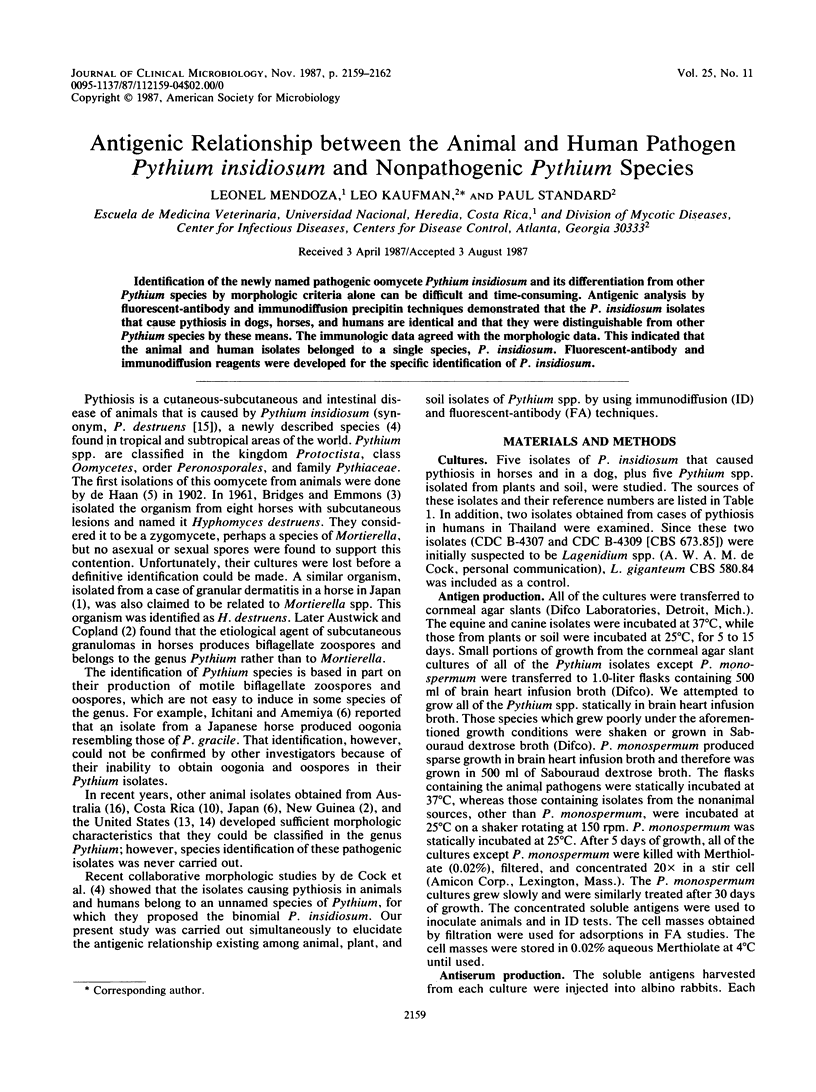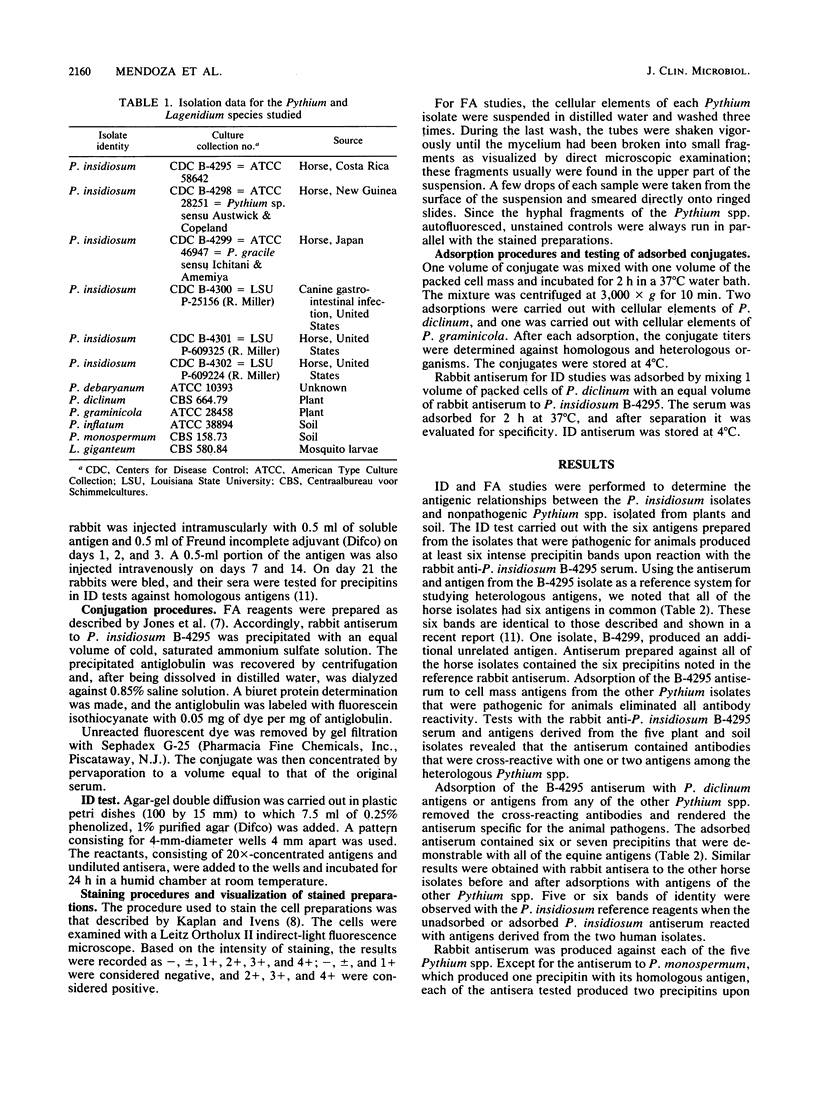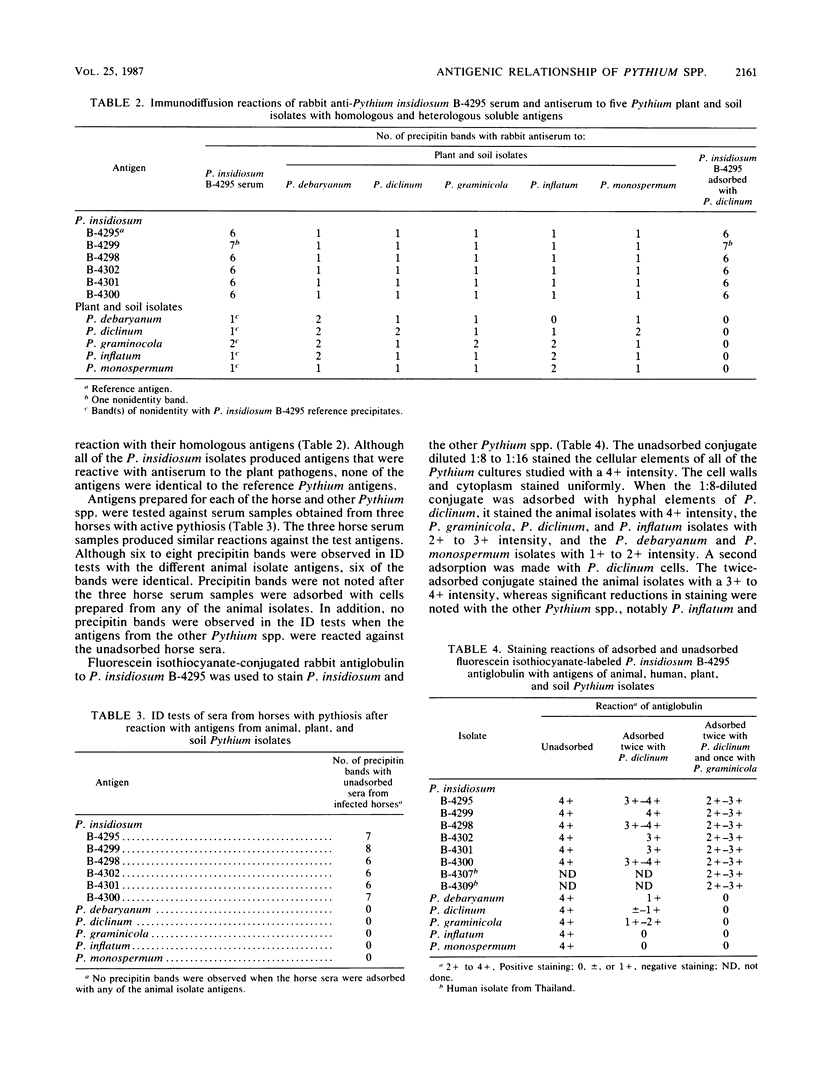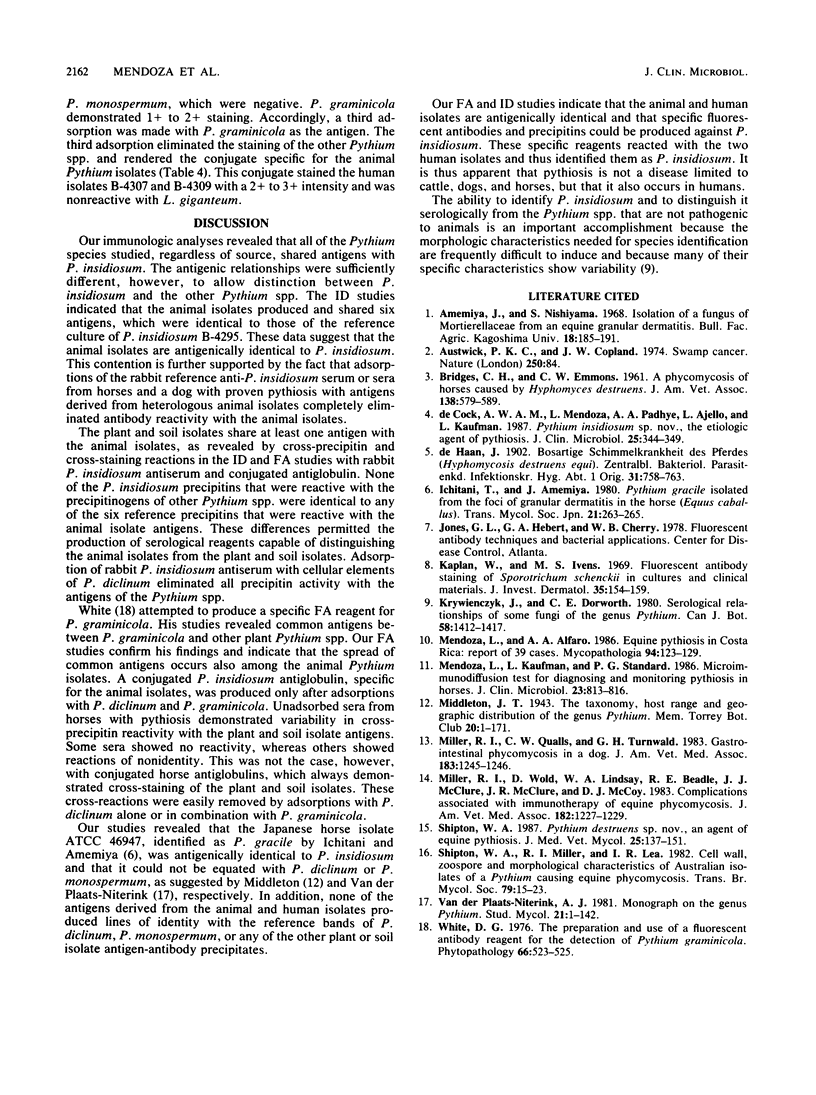Abstract
Identification of the newly named pathogenic oomycete Pythium insidiosum and its differentiation from other Pythium species by morphologic criteria alone can be difficult and time-consuming. Antigenic analysis by fluorescent-antibody and immunodiffusion precipitin techniques demonstrated that the P. insidiosum isolates that cause pythiosis in dogs, horses, and humans are identical and that they were distinguishable from other Pythium species by these means. The immunologic data agreed with the morphologic data. This indicated that the animal and human isolates belonged to a single species, P. insidiosum. Fluorescent-antibody and immunodiffusion reagents were developed for the specific identification of P. insidiosum.
Full text
PDF



Selected References
These references are in PubMed. This may not be the complete list of references from this article.
- Austwick P. K., Copland J. W. Swamp cancer. Nature. 1974 Jul 5;250(461):84–84. doi: 10.1038/250084a0. [DOI] [PubMed] [Google Scholar]
- De Cock A. W., Mendoza L., Padhye A. A., Ajello L., Kaufman L. Pythium insidiosum sp. nov., the etiologic agent of pythiosis. J Clin Microbiol. 1987 Feb;25(2):344–349. doi: 10.1128/jcm.25.2.344-349.1987. [DOI] [PMC free article] [PubMed] [Google Scholar]
- KAPLAN W., IVENS M. S. Fluorescent antibody staining of Sporotrichum schenckii in cultures and clinical materials. J Invest Dermatol. 1960 Sep;35:151–159. doi: 10.1038/jid.1960.99. [DOI] [PubMed] [Google Scholar]
- Mendoza L., Alfaro A. A. Equine pythiosis in Costa Rica: report of 39 cases. Mycopathologia. 1986 May;94(2):123–129. doi: 10.1007/BF00437377. [DOI] [PubMed] [Google Scholar]
- Mendoza L., Kaufman L., Standard P. G. Immunodiffusion test for diagnosing and monitoring pythiosis in horses. J Clin Microbiol. 1986 May;23(5):813–816. doi: 10.1128/jcm.23.5.813-816.1986. [DOI] [PMC free article] [PubMed] [Google Scholar]
- Miller R. I., Qualls C. W., Jr, Turnwald G. H. Gastrointestinal phycomycosis in a dog. J Am Vet Med Assoc. 1983 Jun 1;182(11):1245–1246. [PubMed] [Google Scholar]
- Miller R. I., Wold D., Lindsay W. A., Beadle R. E., McClure J. J., McClure J. R., McCoy D. J. Complications associated with immunotherapy of equine phycomycosis. J Am Vet Med Assoc. 1983 Jun 1;182(11):1227–1229. [PubMed] [Google Scholar]
- Shipton W. A. Pythium destruens sp. nov., an agent of equine pythiosis. J Med Vet Mycol. 1987 Jun;25(3):137–151. [PubMed] [Google Scholar]


